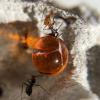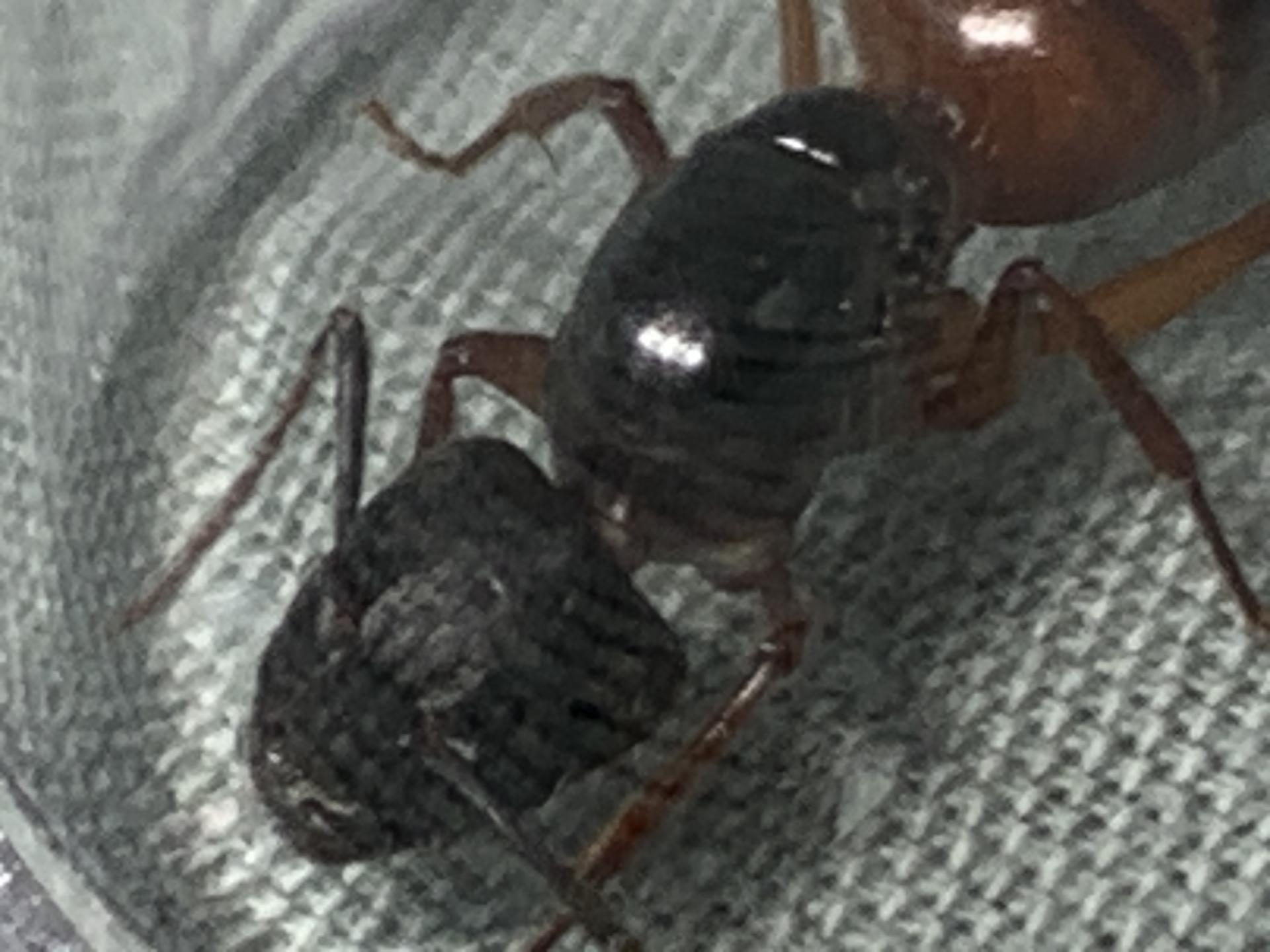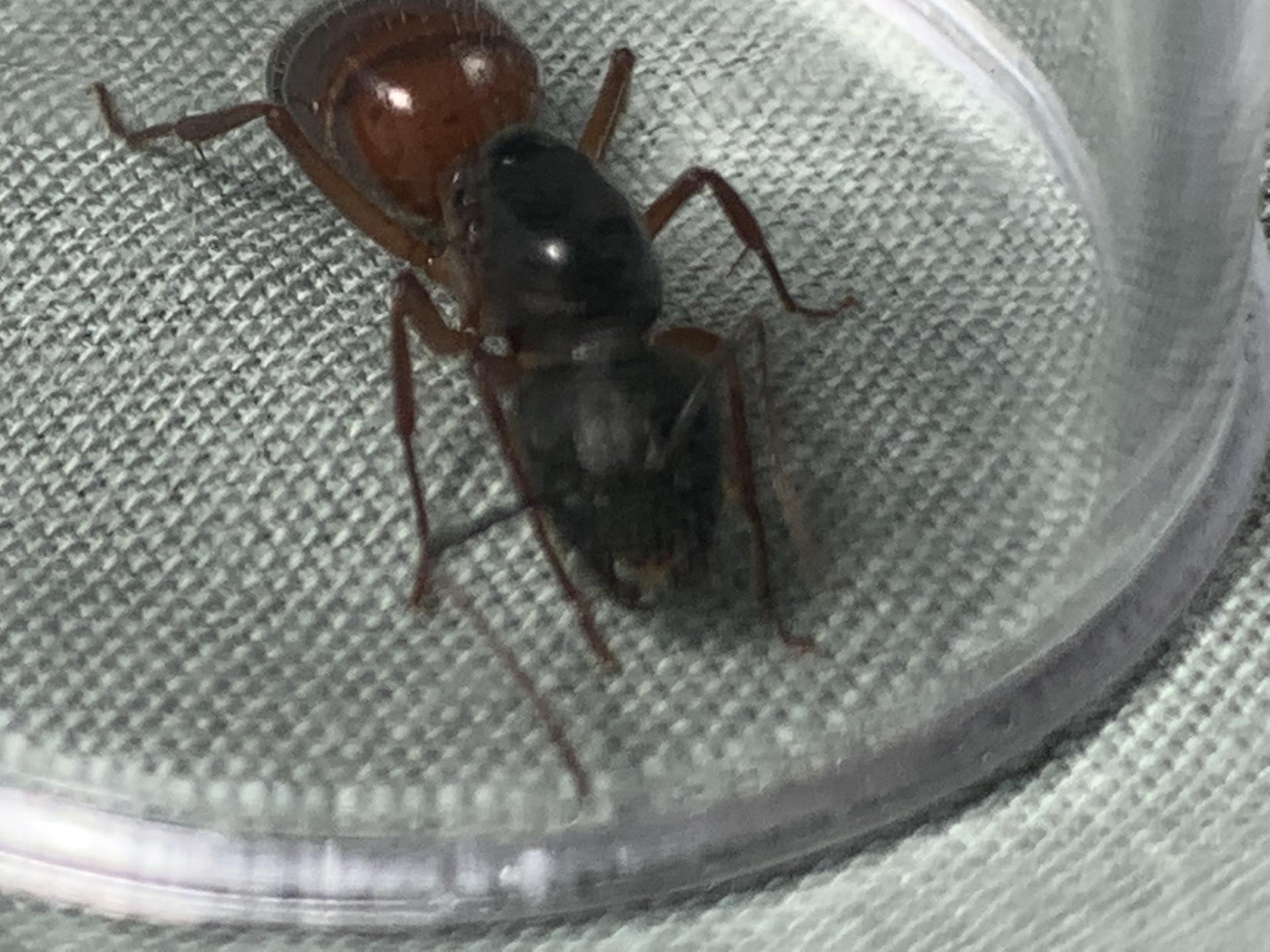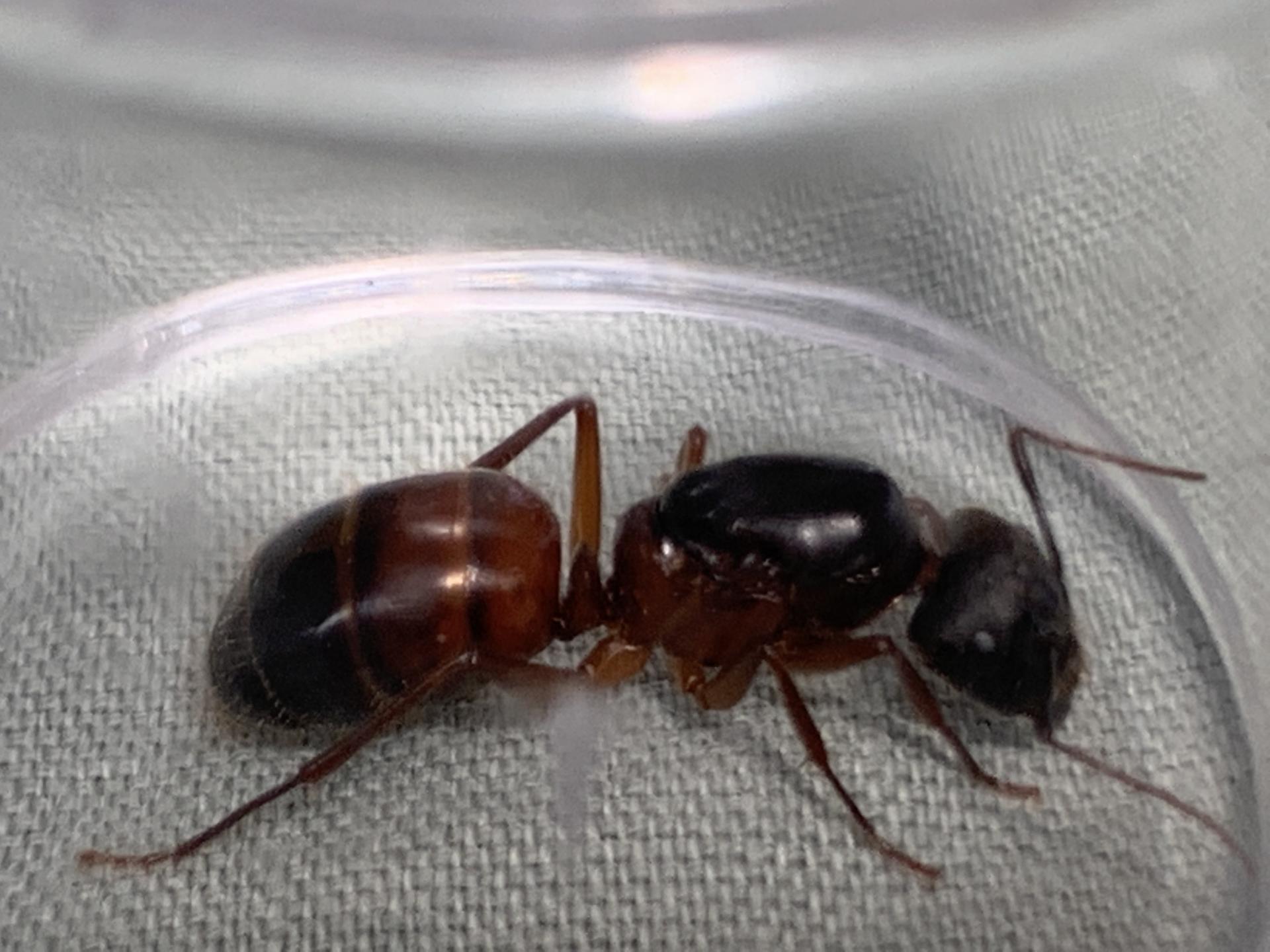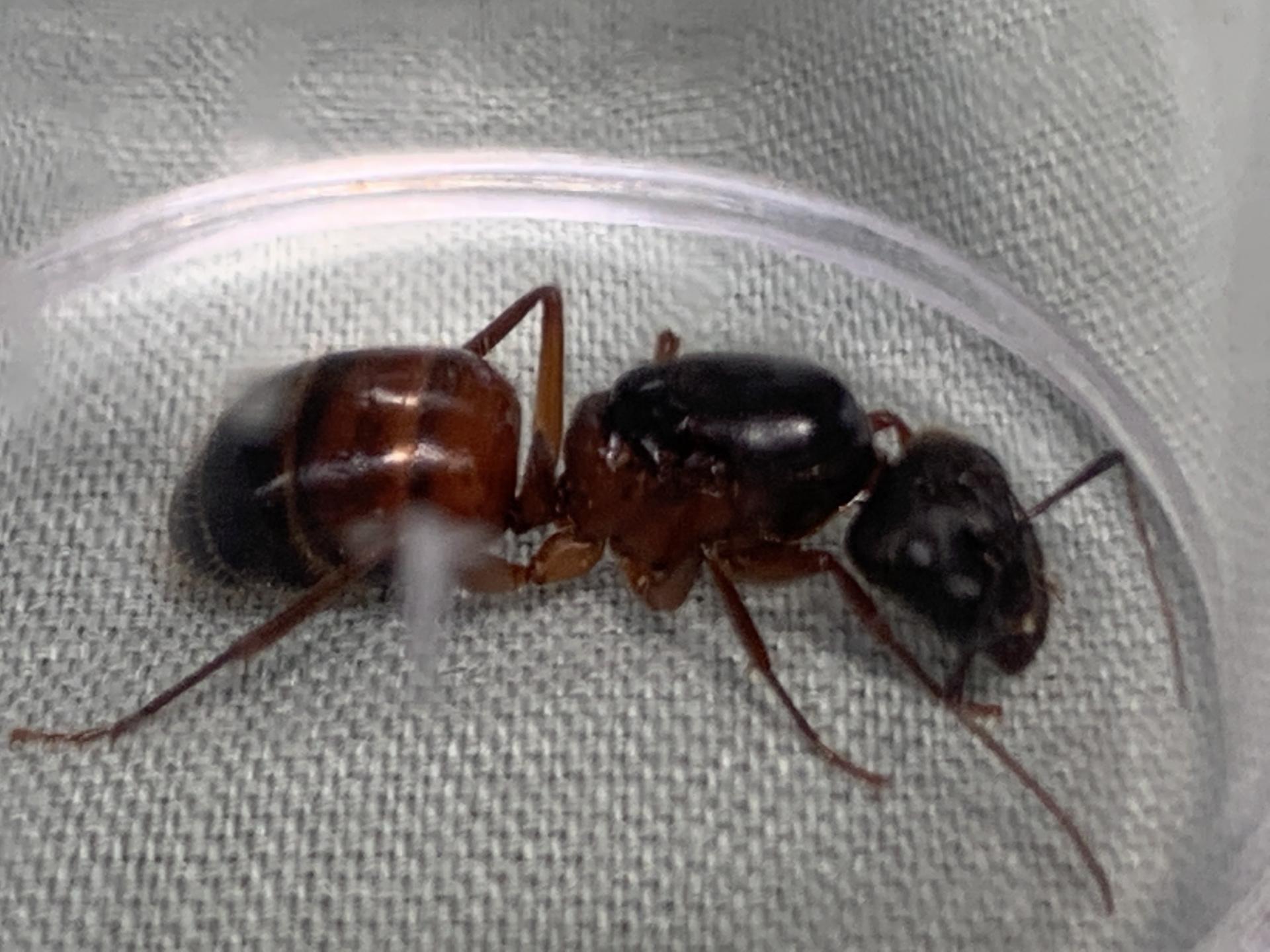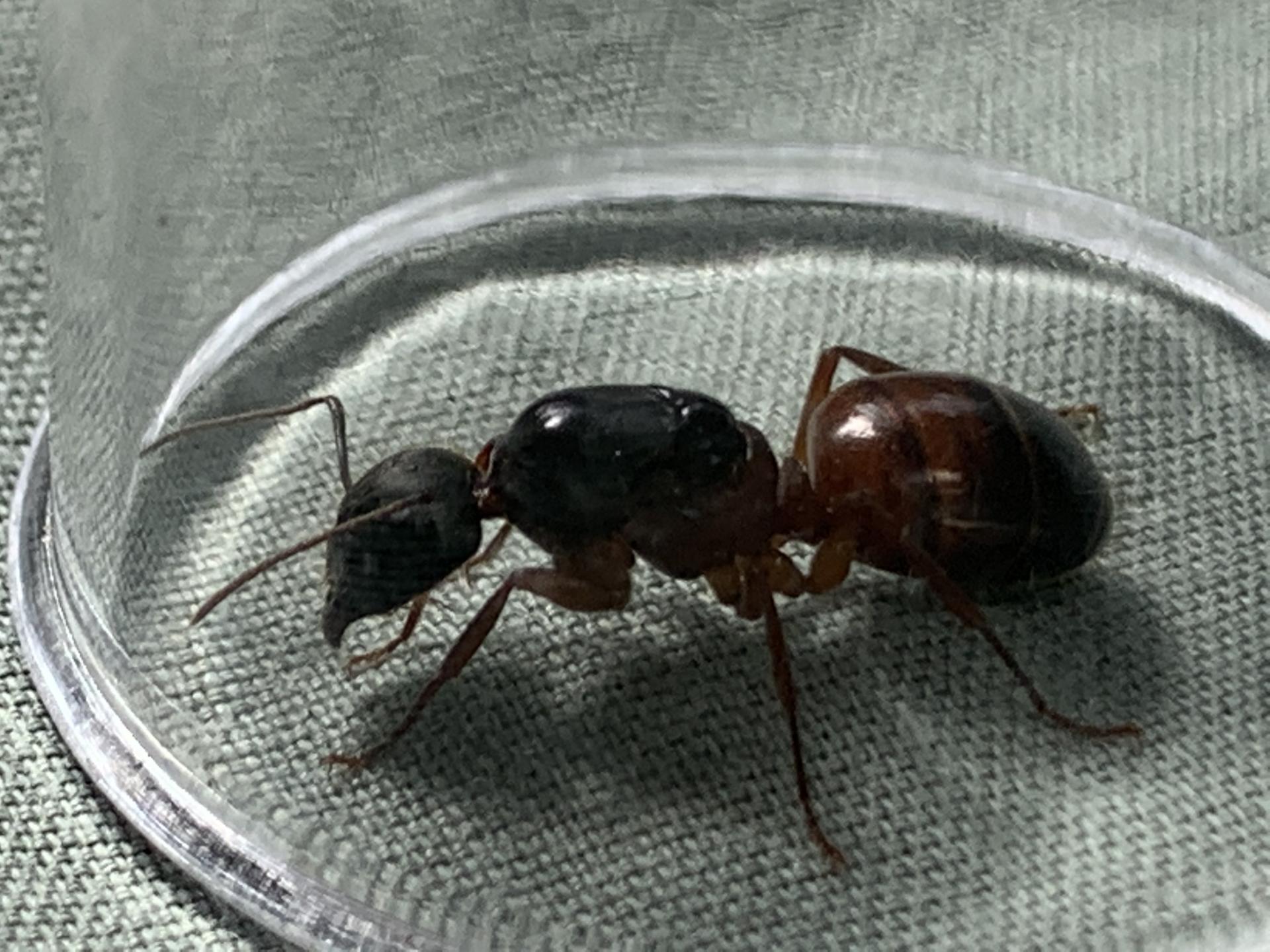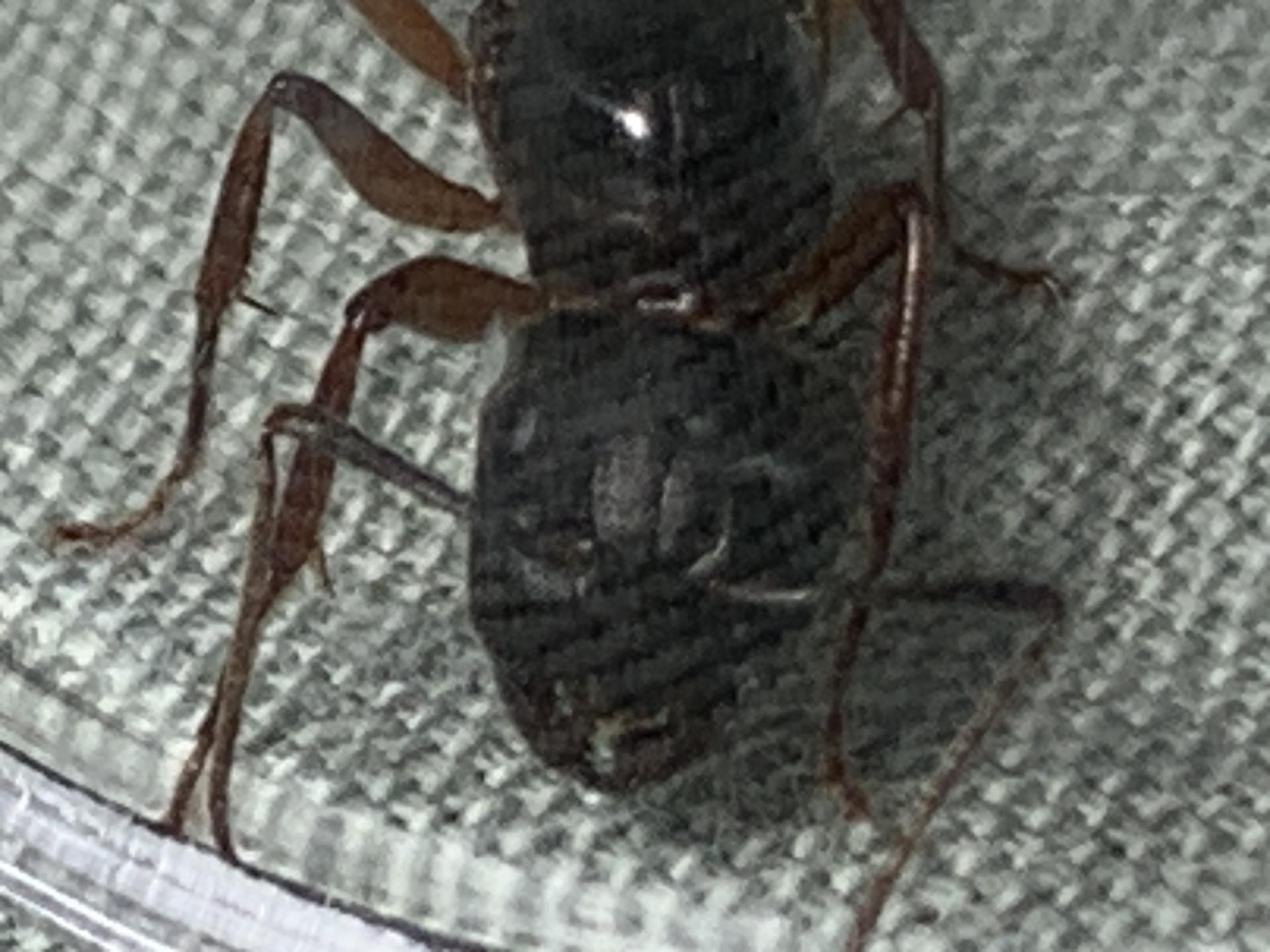1. Location of collection: 1/2 mile down pine valley trailhead in pine valley california.
2. Date of collection: 5/8/2020 at 830 AM
3. Habitat of collection: Oak dominates with rare pine trees and lots of scrubs and some grassy areas. 3200 or so ft in elevation.
4. Length (to the nearest millimeter or 1/16th of an inch.): 15-16mm
5. Coloration, hue, pattern and texture: The lower half the gaster is black and the upper is orange. The superior aspect of the thorax is black and the inferior aspect is orange.
6. Distinguishing characteristics (ie: one petiole node/two petiole nodes, length and orientation of any spines or bumps on the thorax or waist, head shape, eye size, shape of mandibles, number of antennal segments, etc.):
7. Anything else distinctive (ie: odor, behavior, characteristics relative to others in the colony, etc.): Although it was only 2 mm or so smaller than the recent Ca02 i found, it seemed a lot smaller volume wise, its gaster wasn't as big.
8. Nest description: No nests found
9. Nuptial flight time and date: No flight or males identified. Queen found walking along trail. Only one found while on a 2 hour long hike.
Is this camponotus sansubeanus?


